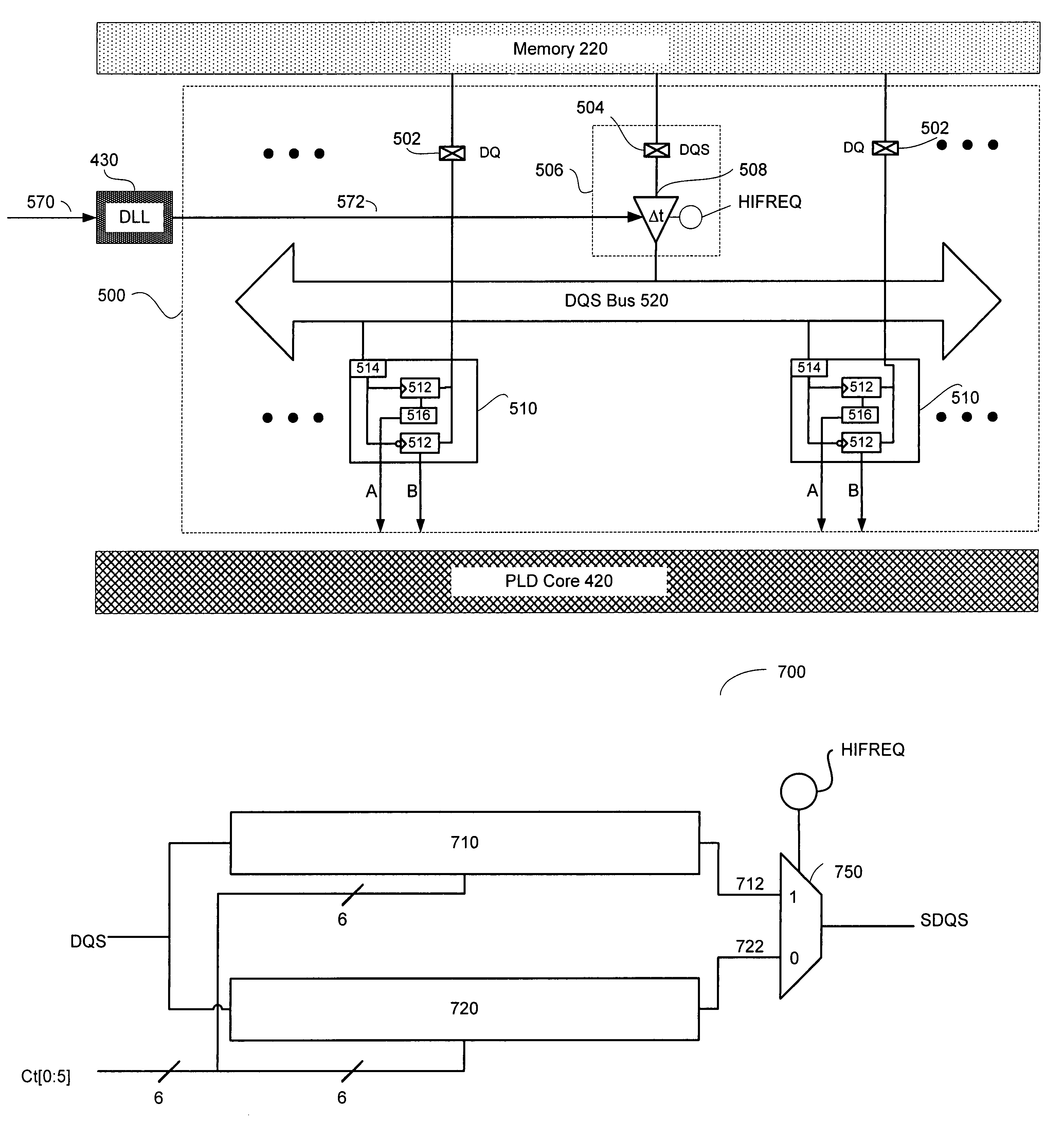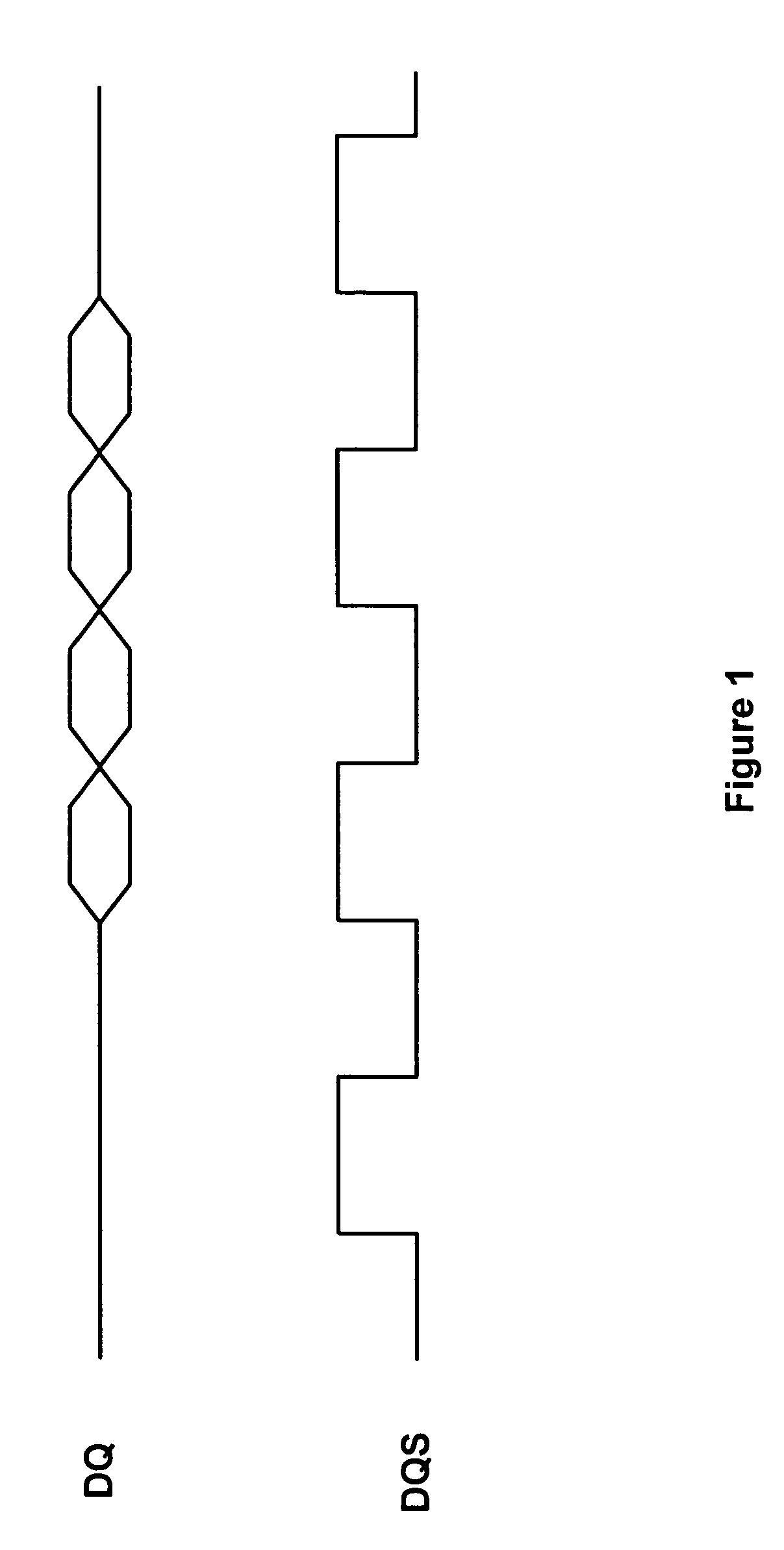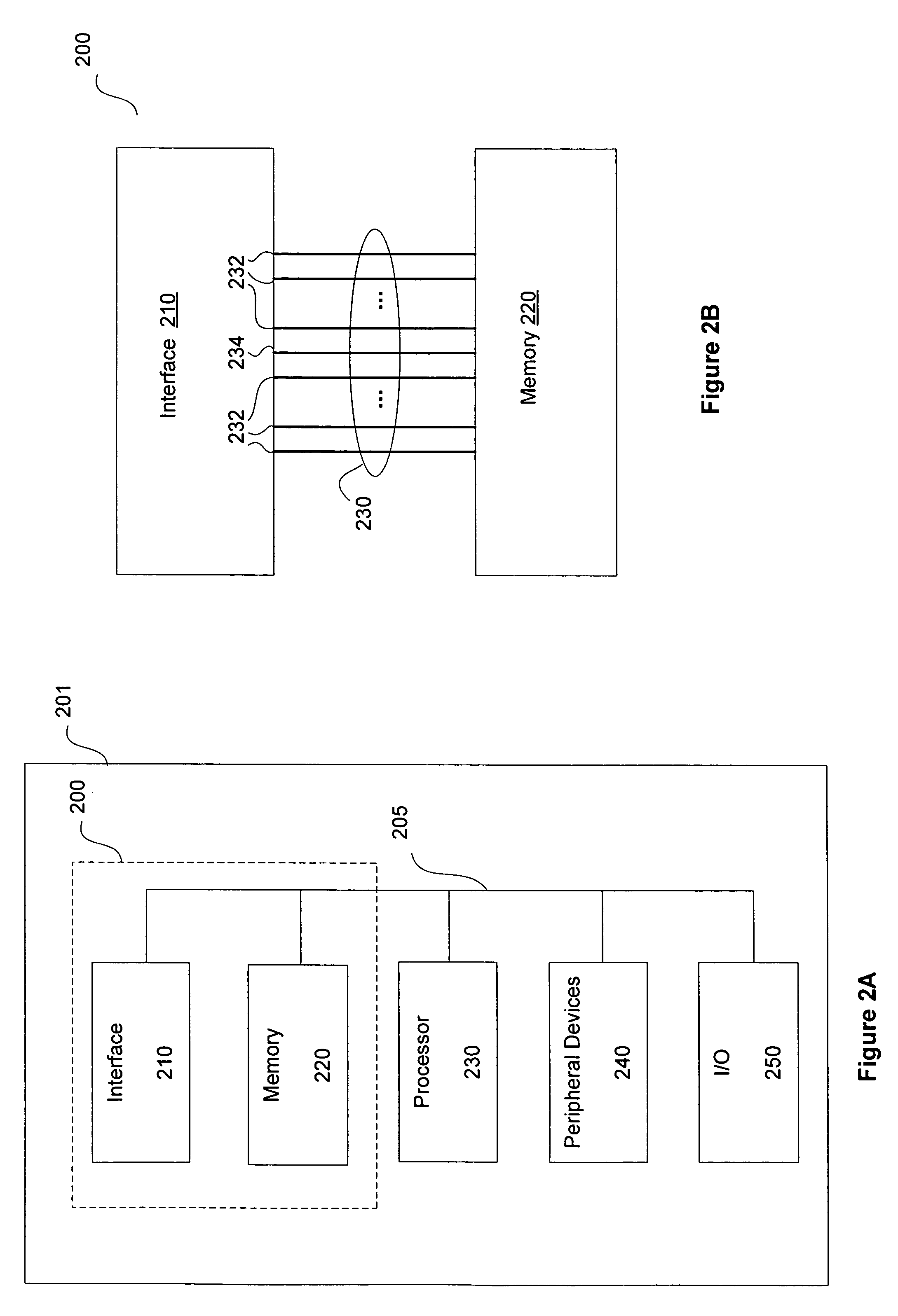Memory interface phase-shift circuitry to support multiple frequency ranges
a phase-shift circuitry and memory interface technology, applied in the direction of digital storage, instruments, pulse techniques, etc., can solve the problems of high process, voltage and temperature (pvt) variation, and the speed of the strobe signal is limited
- Summary
- Abstract
- Description
- Claims
- Application Information
AI Technical Summary
Benefits of technology
Problems solved by technology
Method used
Image
Examples
Embodiment Construction
[0028]To support a wide range of memory frequencies, the present invention provides a phase-shift circuit that can be programmed to operate in one of multiple frequency ranges by using a different delay step and a different maximum delay for each of the multiple frequency ranges. For illustrative purposes, the invention is described in the context of a double-data rate (DDR) system. It is to be understood, however, that the principles of this invention can be applied to a variety of data rate systems.
[0029]FIG. 2A is a block diagram of an exemplary system 200 including a memory interface circuit (interface) 210, and a multiple-data rate memory device 220, according to one embodiment of the present invention. System 200 may be part of a larger system 201, such as a data processing system, which may include one or more of the following components: a processor 230, peripheral devices 240, and input / output (I / O) device(s) 250, in addition to the components in system 200. The above compo...
PUM
 Login to View More
Login to View More Abstract
Description
Claims
Application Information
 Login to View More
Login to View More - R&D
- Intellectual Property
- Life Sciences
- Materials
- Tech Scout
- Unparalleled Data Quality
- Higher Quality Content
- 60% Fewer Hallucinations
Browse by: Latest US Patents, China's latest patents, Technical Efficacy Thesaurus, Application Domain, Technology Topic, Popular Technical Reports.
© 2025 PatSnap. All rights reserved.Legal|Privacy policy|Modern Slavery Act Transparency Statement|Sitemap|About US| Contact US: help@patsnap.com



